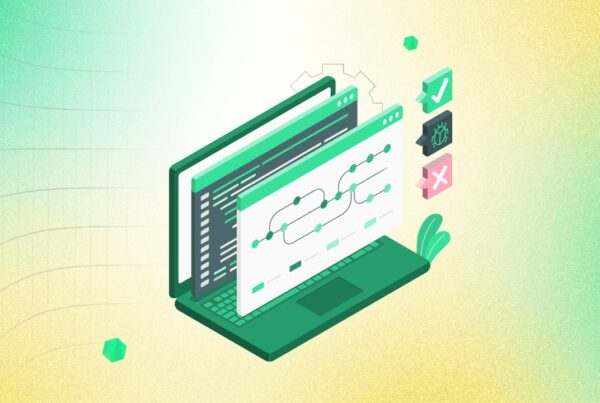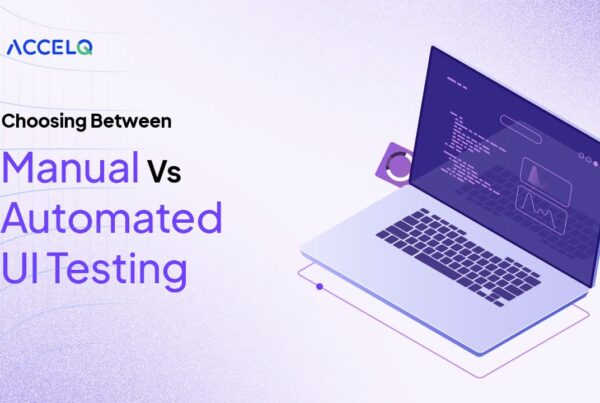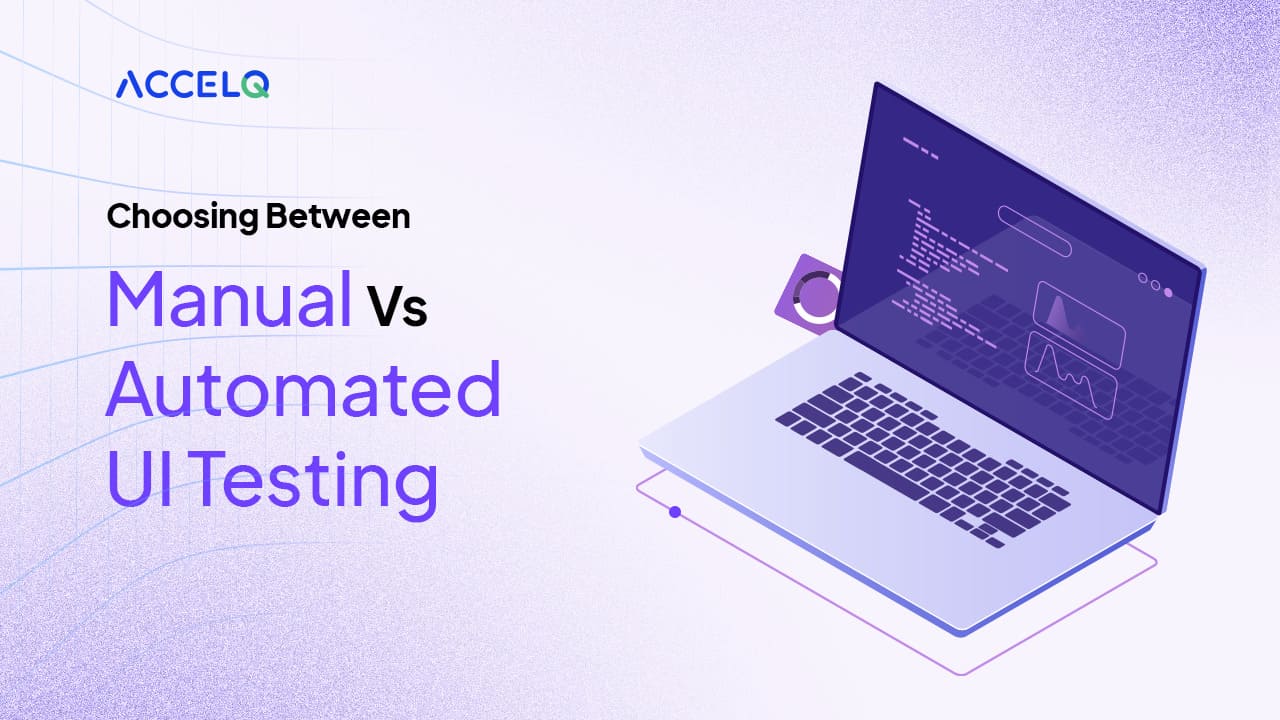Manual vs Automated UI Testing: How to Scale Without Breaking Quality

In today’s digital-first world, the user interface (UI) has become a battlefield for software adoption. An uncluttered UI with smooth performance and an intuitive user experience isn’t a bonus; it’s a requirement. In an industry where the level of user experience is ever-increasing, poorly designed apps fall by the wayside. With UI/UX excellence becoming increasingly vital in this click-happy world, sweeping testing has become a mission-critical functionality.
This blog aims to arm teams and engineering leaders with insight into manual vs automated UI testing. This decision will significantly affect release velocity, quality assurance, and, in the end, user happiness.
- Why UI Testing Matters More Than Ever
- Manual UI Testing: When Human Insight Matters
- The Real-World Challenges of UI Testing
- Why Manual UI Testing Falls Short in Modern SDLC
- What Is UI Automation Testing?
- Manual vs Automated UI Testing: Which is Better
- UI Test Automation at Scale – Powered by ACCELQ
- Conclusion: Choose Automation Wisely
Why UI Testing Matters More Than Ever?
UI testing is the verification of visual and interactive elements that users consume. Be it navigation menus, form validations, or page transitions, each component should function well and feel like it fits. Half-baked or broken UIs are not usually realized until late in the game, by which time, it’s very expensive to fix.
There are two main common methods of doing that in UI: UI test automation vs manual testing. But what strategy scales, works fast, and is good for the ROI long term?
Manual UI Testing: When Human Insight Matters
With manual UI testing, your testers are manually using your application as users: clicking on buttons, checking for your UI to be responsive, confirming UI alignment, and ensuring it is usable. It is specifically useful for exploratory testing, accessibility validation, and finding visual bugs.
Key benefits of manual UI testing:
- UX flaws that automation might miss are revealed by human-led exploration.
- Great for one-offs or small batch runs when scripting is overkill.
- Agile is for quickly transitioning interfaces during the early stages of design development.
However, as applications grow in size, manual testing becomes too time-consuming, error-prone, and non-sustainable in the long run, particularly in the age of Agile and DevOps, where smaller parts of the application are constantly iterated on.
The Real-World Challenges of UI Testing
Regardless of the testing method, UI testing presents unique challenges:

1. Frequent UI Modifications
Modern applications often undergo regular design updates or third-party integrations. Keeping tests in sync with frequent UI changes is a continuous struggle.
2. Time-Intensive Script Creation
UI test cases must account for various devices, screen resolutions, and browsers, demanding extensive coverage. Manual test case creation slows down this effort, especially with dynamic components like animations or drag-and-drop elements.
3. Tool Selection Complexity
Not all UI automation tools are created equal. Many focus solely on surface-level UI validation, offering limited scalability or ROI. Choosing a tool with deep capabilities is critical.
4. Scalability and Maintenance
Dynamic web apps with rich frontend behavior often break brittle scripts. Scaling tests while maintaining them without frequent rework is a real concern, especially when relying solely on human testers.
Why Manual UI Testing Falls Short in Modern SDLC?
While manual testing provides meaningful insights, it struggles to keep pace with fast-changing UIs and continuous delivery pipelines:
- Slows down releases due to manual effort at every cycle
- Inconsistent coverage across operating systems, browsers, and device types
- Error-prone with high dependency on tester judgment
- Inefficient for regression testing or high-volume test scenarios
Manual vs automated UI testing: Which is better? This is a valid question. Still, manual testing alone can no longer be the primary engine for quality in today’s hyper-accelerated delivery environments.
What Is UI Automation Testing?
Automated UI testing uses tools and frameworks to mimic user interactions (clicks, input submissions, screen navigation) and ultimately test if the UI acts as expected. These automated UI tests can be scripted once and then utilized across releases, devices, or environments.
Why teams are shifting toward automation:
- Faster execution cycles with lower manual overhead
- Greater coverage across permutations of OS, browsers, and screen sizes
- Parallel testing across multiple environments
- Improved accuracy and elimination of human error
It also enables shift-left testing—allowing UI validations earlier in the SDLC—thereby identifying UI regressions before they reach production.
Manual vs Automated UI Testing: Which is Better
Still wondering, what is the difference between manual and automated UI testing? The table below makes it clear that while both have roles, automation delivers sustainable, long-term benefits.
| Feature | Manual UI Testing | Automated UI Testing |
|---|---|---|
| Speed | Slower, labor-intensive | Fast and repeatable |
| Accuracy | Subjective, error-prone | Consistent, script-driven |
| Coverage | Limited to tester bandwidth | Scales across platforms |
| Scalability | Low | High |
| Dynamic UI support | Manual intervention required | Adapts with smart tools |
| Regression testing | Resource-heavy | Effortless once set up |
UI Test Automation at Scale – Powered by ACCELQ
Enter ACCELQ—an AI-powered, codeless platform that redefines UI test automation. Unlike traditional tools that demand heavy scripting, ACCELQ brings natural language automation, intelligent test planning, and self-healing capabilities to the forefront.
What sets ACCELQ apart?
- Codeless test authoring in plain English—no scripting skills required
- Self-healing automation for stable tests across UI changes
- Cross-platform execution—web, mobile, desktop, and cloud-native
- Tight integration with Jira, Jenkins, Git, TFS, and more
- AI-powered test generation for predictive coverage
- Live dashboards & analytics for instant feedback and faster resolution
- Manual + Automated hybrid workflows with seamless test handoffs
It’s not just automation—it’s intelligent, adaptive, and designed for scale.
Conclusion
The perfect UI testing strategy is not selecting between manual and automation. That’s about standing by and knowing which to use when.
Manual vs automated UI testing is great for early design feedback or exploration. However, automated UI tests are necessary for product maturity, shorter releases, and wider coverage.
And when automation is performed correctly — using the right tools — it not only saves time; it generates confidence, consistency, and quality at the speed businesses need to compete.
Experience the ACCELQ difference.
See how our AI-driven platform can reduce UI test maintenance by 72% and testing costs by 53%.
Let’s redefine how your team delivers quality.
Prashanth Punnam
Sr. Technical Content Writer
With over 8 years of experience transforming complex technical concepts into engaging and accessible content. Skilled in creating high-impact articles, user manuals, whitepapers, and case studies, he builds brand authority and captivates diverse audiences while ensuring technical accuracy and clarity.
You Might Also Like:
 What is Automated Testing in Software Testing? A Beginner’s Guide
What is Automated Testing in Software Testing? A Beginner’s Guide
What is Automated Testing in Software Testing? A Beginner’s Guide
 BDD in Testing: Improve Automation & Team Productivity
BDD in Testing: Improve Automation & Team Productivity
BDD in Testing: Improve Automation & Team Productivity
 Manual vs Automated UI Testing: How to Scale Without Breaking Quality
Manual vs Automated UI Testing: How to Scale Without Breaking Quality
































